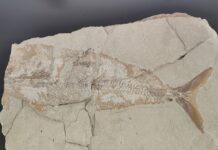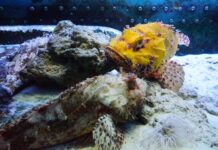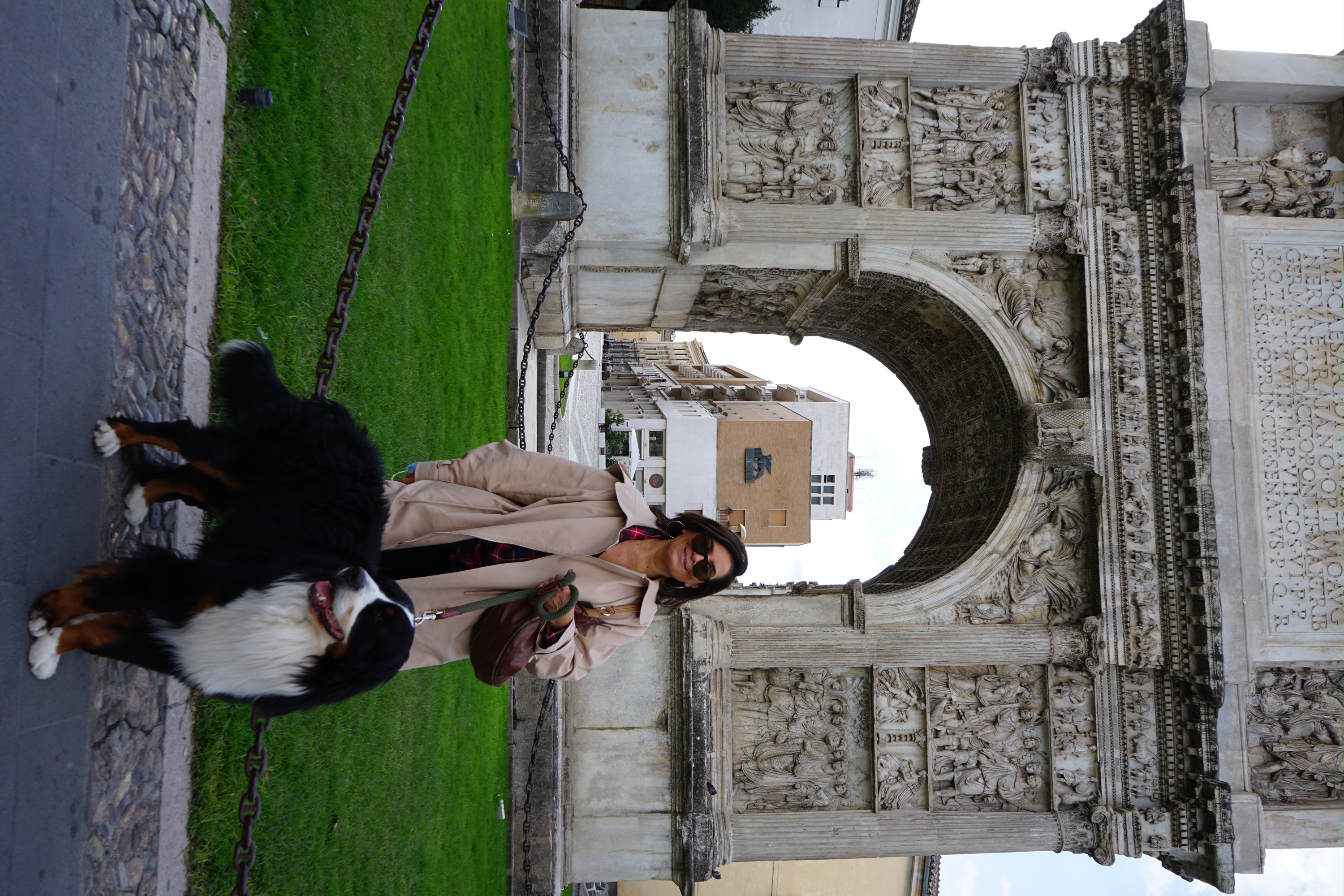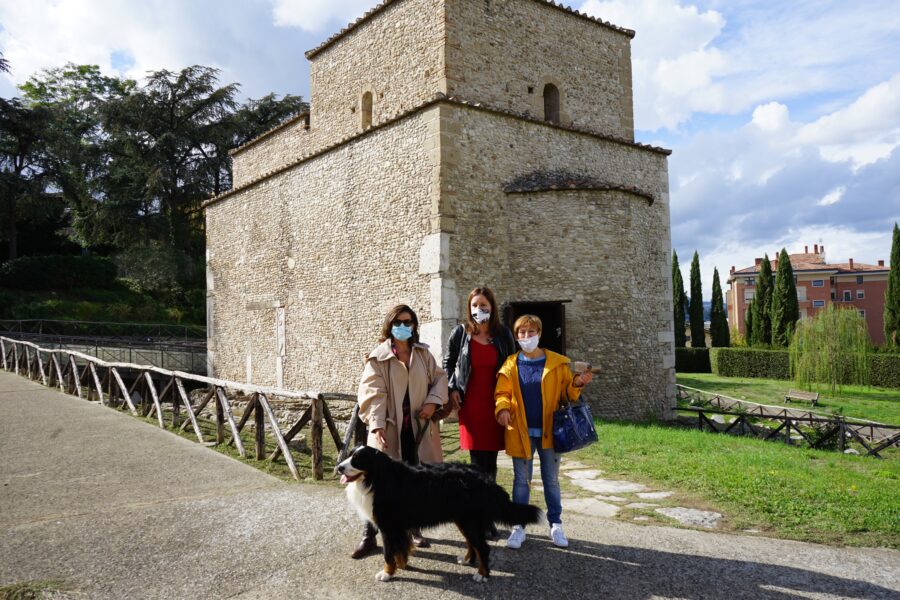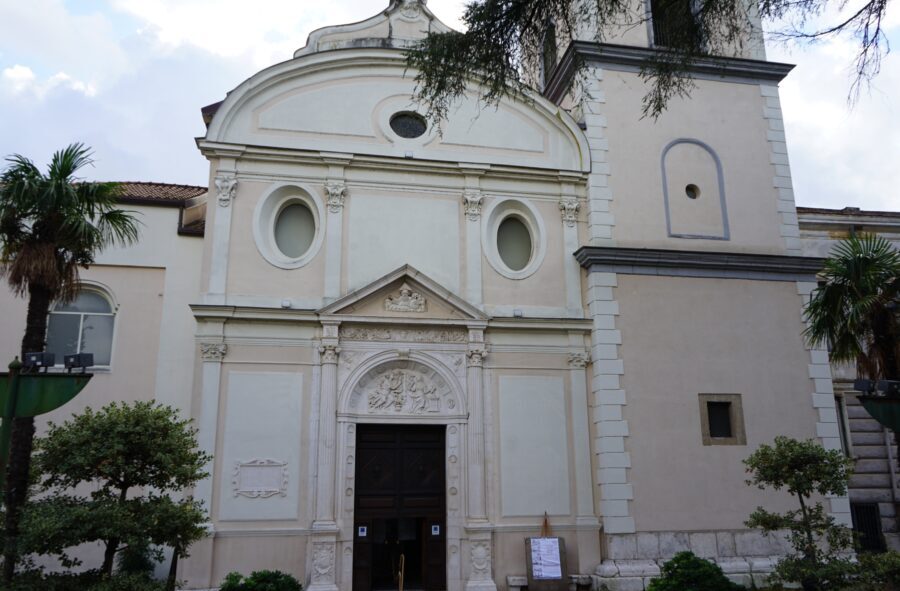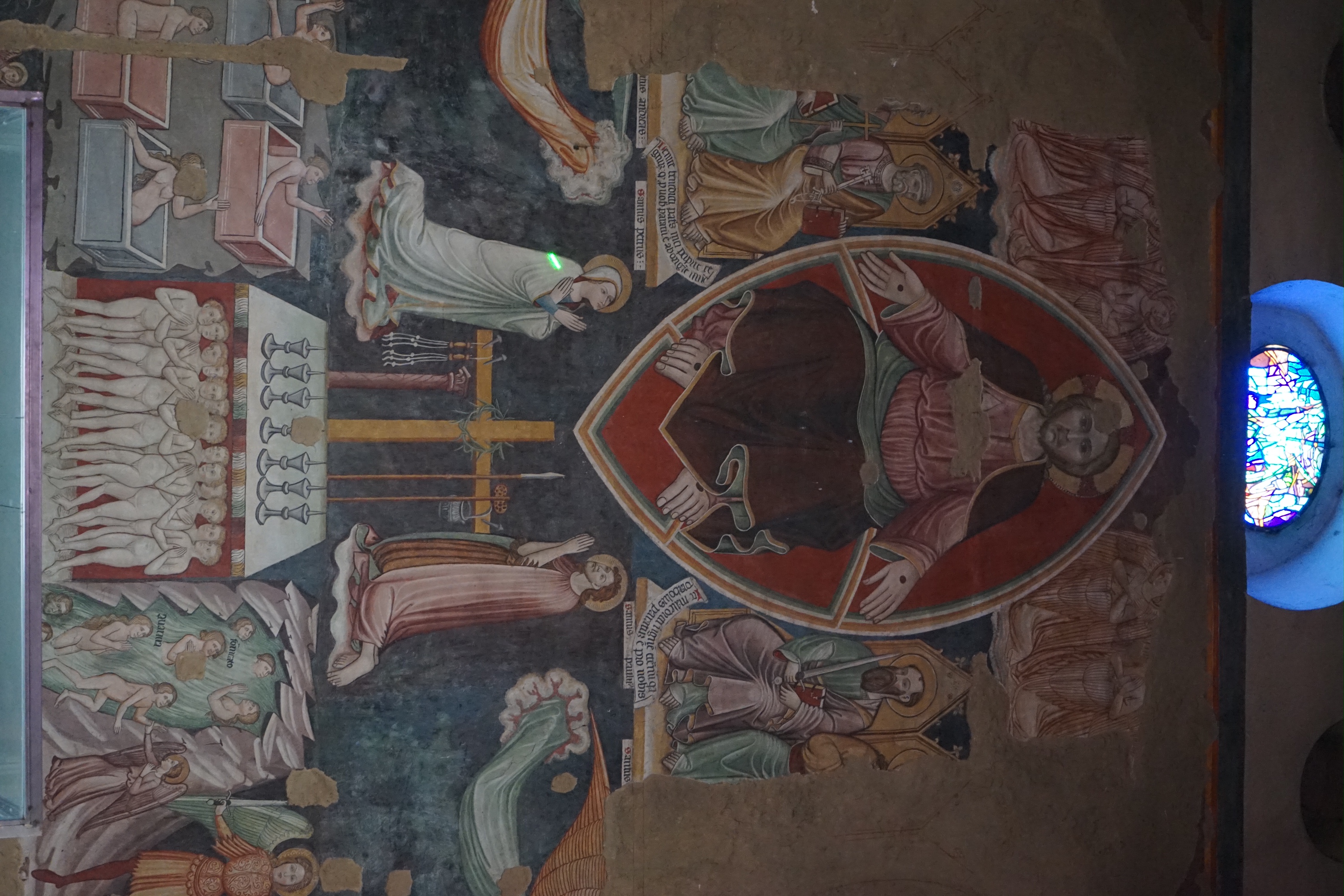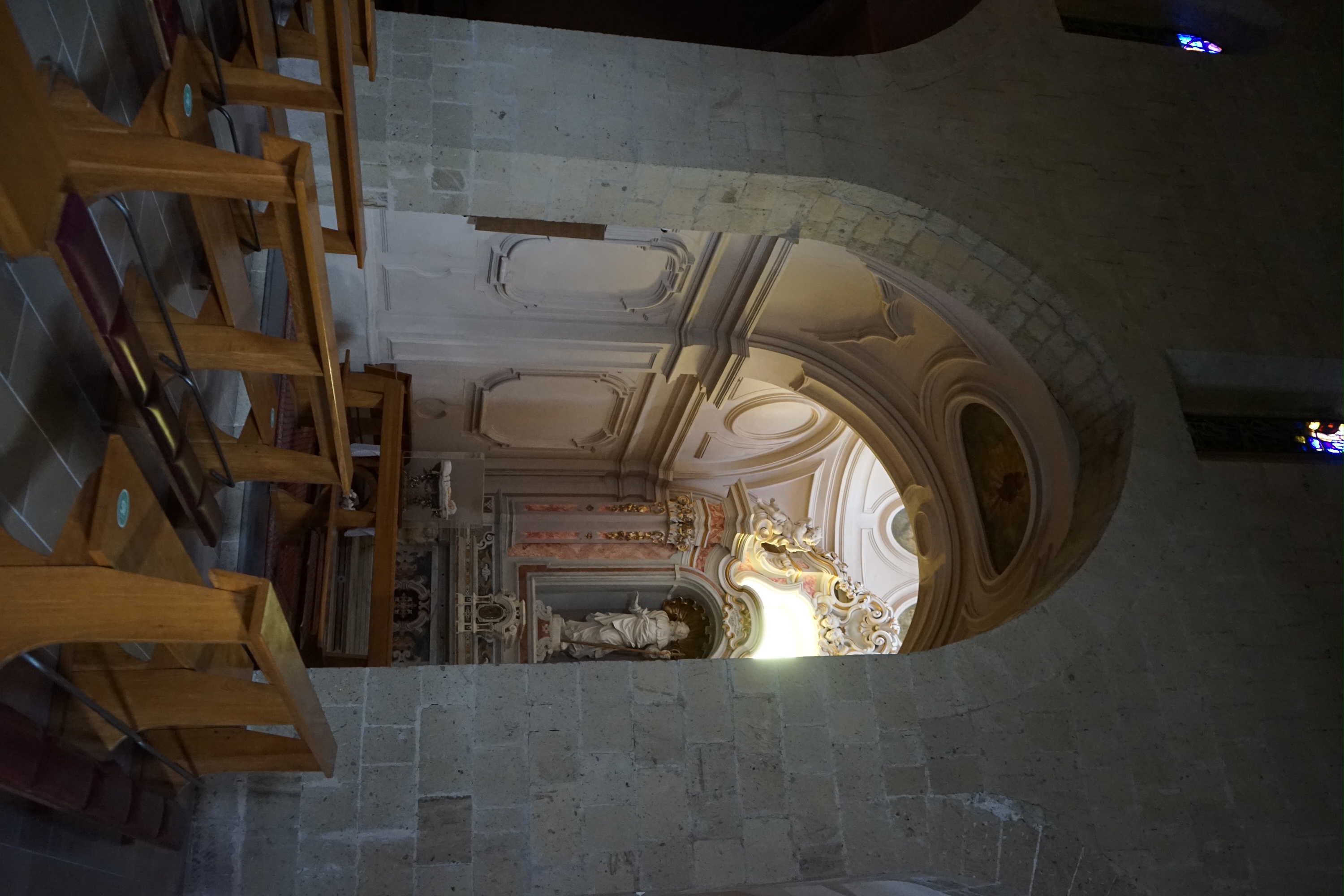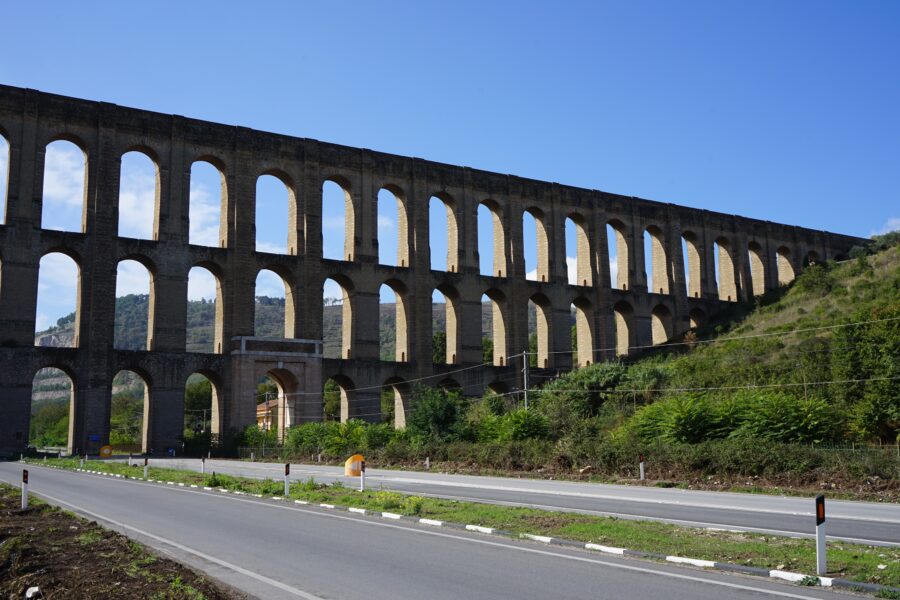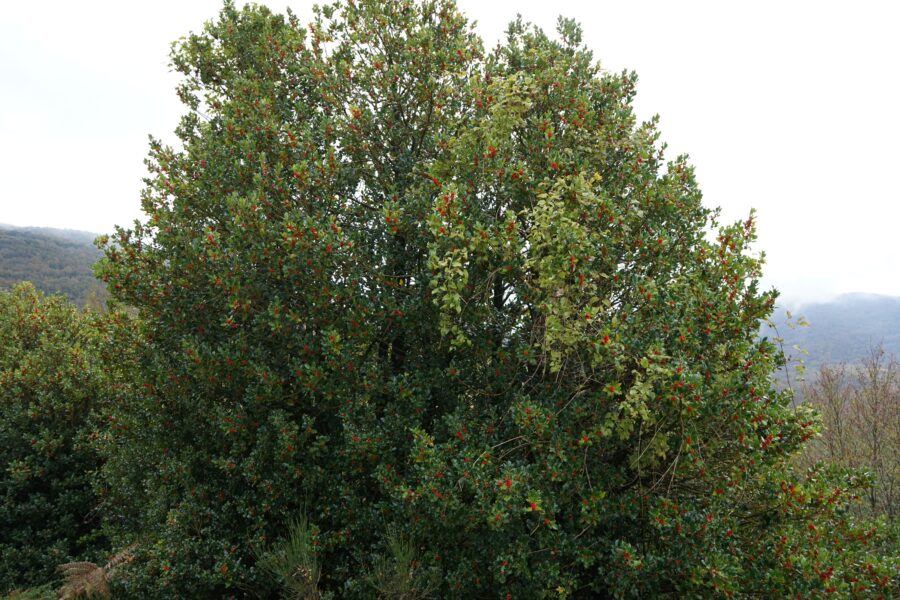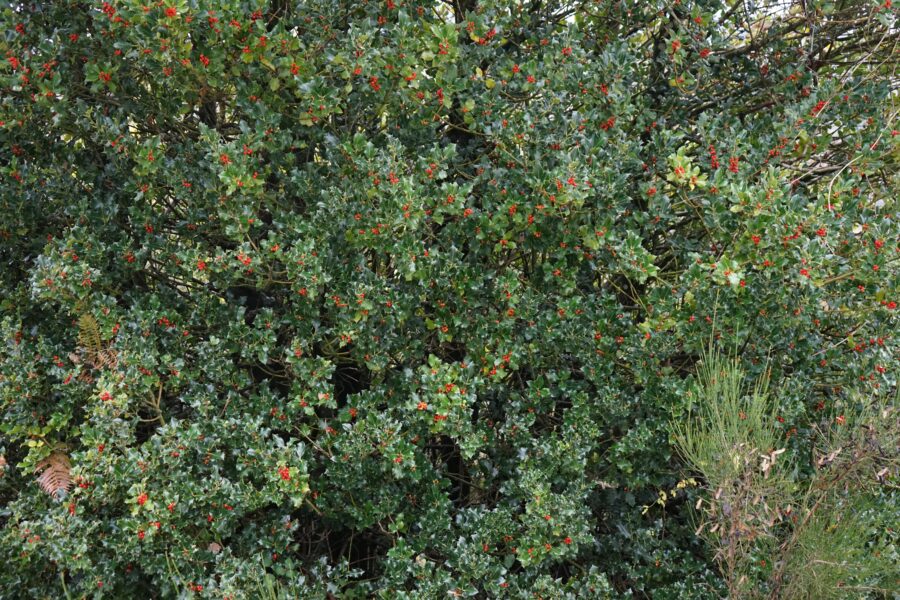The main center of Sannio is Benevento, the legendary city of witches. History and legends tells us Esther Buonanno, the fourth element of Puglia-Campania&Co who passionately takes care of transferring the events of her land to those who visit it.
Discovering the Sannio between villages, nature and good food
The Samnite city of Maloentum was renamed by the Romans Beneventum after the victory against Pyrrhus, the king of Epirus. It was a Lombard Duchy, became a papal possession and remained in the Papal State until the unification of Italy. And of all these epochs it retains memory.
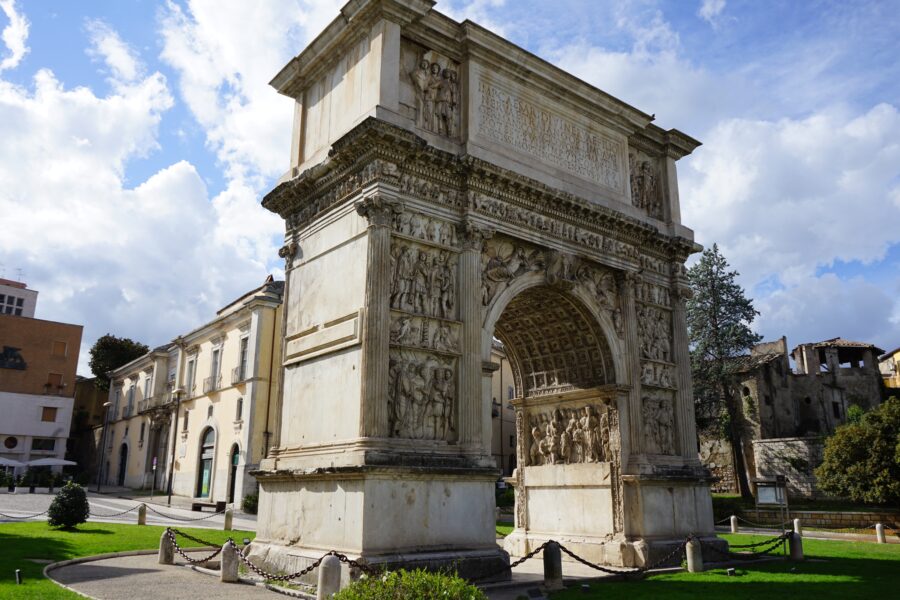

The symbol of the city is the grandiose Arch of Trajan and our visit began nearby with a stop at the church of Sant’Ilario in Porta Aurea, built in the 7th century, when the Lombards were converted to Catholicism by Bishop Barbato, author of the cut of the famous Witches Walnut.

And here comes the witches to whom is dedicated the Janua museum from janare, as they are called in the local language, with an exhibition of objects, symbols, instruments of torture and a multimedia section. History and legend intertwine around the walnut tree under which the Lombards circled with their horses in a jumble hat popular imagination has turned into the sabbath of women accused of witchcraft.
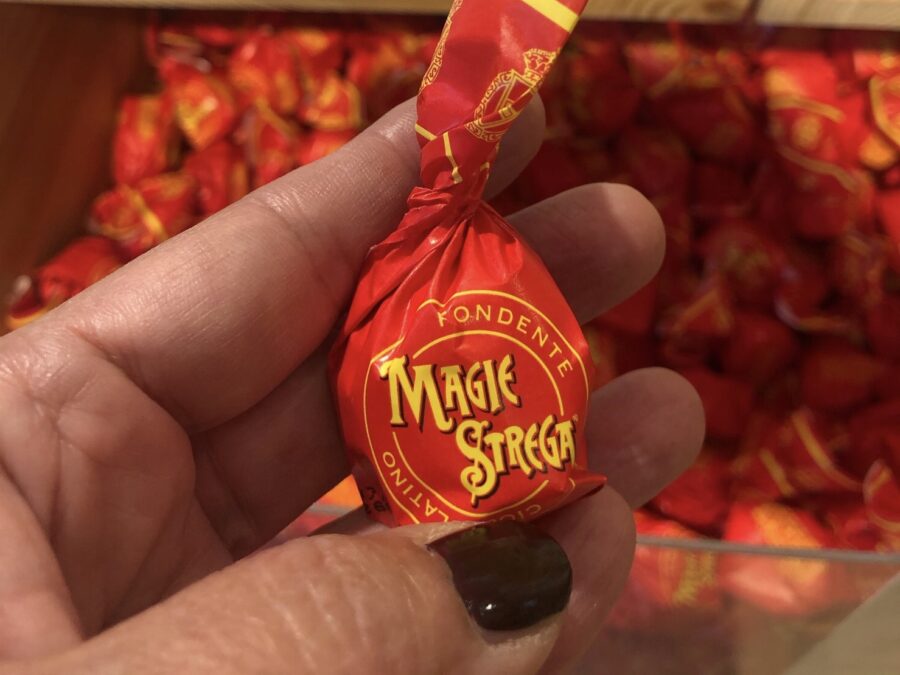
Today Benevento is instead the “city of the Strega”, the famous liqueur spread all over the world. We were unable to visit the museum dedicated to the history of the products created by the Alberti family in 1860, but we tasted the Strega’s filled chocolates, unique and unmistakable for its flavor, thanks to the exclusive use of 76 natural ingredients.
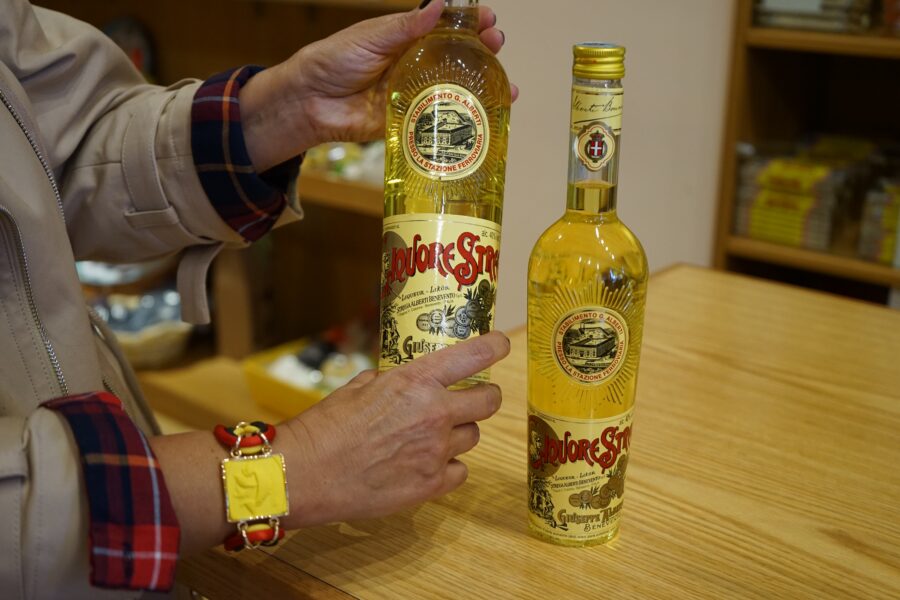
The recipe is still secret today but thanks to Angela we know that there are cinnamon from Ceylon, pepper from Jamaica, juniper and lavender from the Apennines, mint from Sannio, ginger and even myrrh, while its characteristic color yellow comes from saffron. And if we already knew that Liquore Strega is much loved for its versatility, we instead learned that it is also one of the most imitated in the world and an entire section of the museum is dedicated to the display of “fake” bottles.

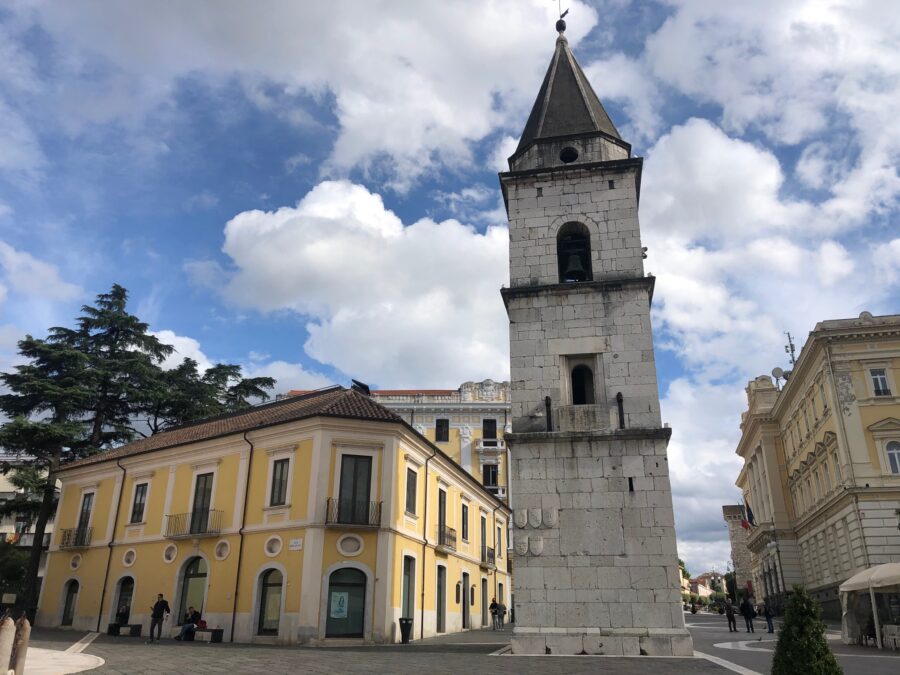
In the visit to the capital of Sannio you cannot miss its most suggestive monument which is the church of Santa Sofia, a masterpiece of the Middle Ages founded by the Lombards in the eighth century, which stands out for its unusual plan, marked by pillars and columns, and for the magnificent cloister. The monastery is home to the Provincial Museum of Sannio, while the historical section is housed in the Rocca dei Rettori, built on the model of the great French military buildings of Avignon and Carcassonne.

The Egyptian Obelisk and the Leproso Bridge, dating back to the first century BC, also belong to antiquity. C., while the 12th century Cathedral was rebuilt after the war and only the facade and the bronze portal are original.
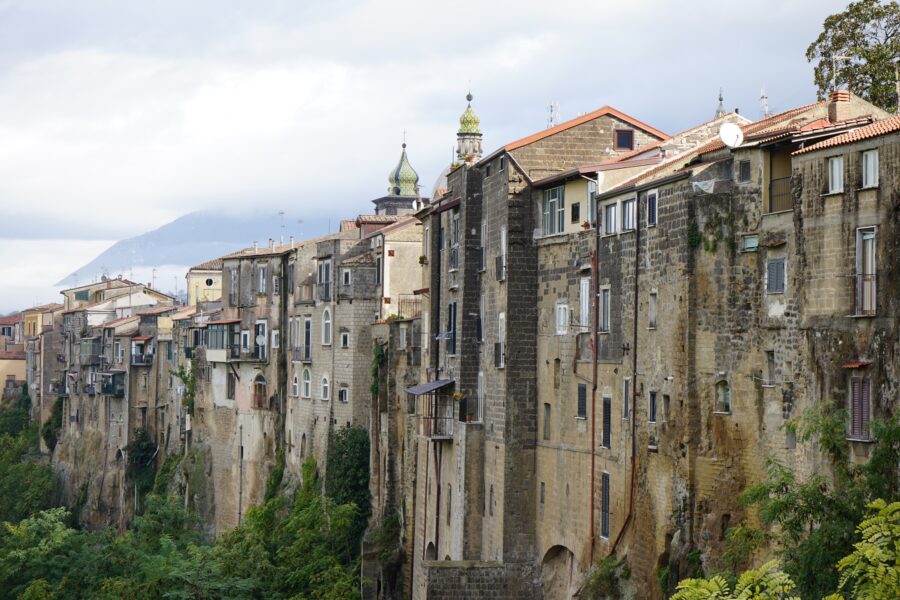
Another pearl of the Benevento area is Sant’Agata dei Goti, one of the most beautiful villages in Italy clinging to a tufaceous ridge between the two streams Riello and Martorano, which we discovered together with Claudio Lubrano and his fantastic furry companion Andrea.

The first step was the stop on the bridge that connects the still intact historic core and the modern part. Here, where the view over the village is magnificent, Professor Lubrano told us about its origins. The city was formerly called Saticula, while the current name of Sant’Agata dei Goti dates back to the sixth century AD, when a colony of Goths settled in the area.
The events of the following centuries are common to those of many other towns in Campania between the dominations of Lombards, Normans, that of the Papacy and feudal lords, from Della Ratta to Acquaviva to Carafa.
Episcopal seat since the 10th century, among its bishops were the future Pope Sixtus V and Sanint Alfonso dei Liguori. The whole historic center can be defined as a small open-air museum and we started visiting it from the Castle.
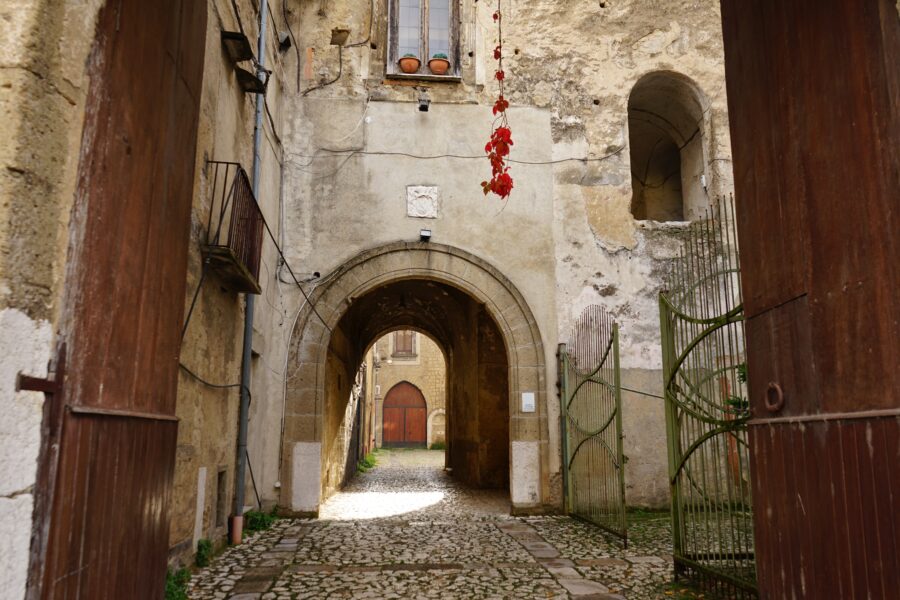
Through a large atrium and a staircase you enter the upper floor in a frescoed room where Claudio told us the story of the Mazzamauriello, the elf who, according to the legend, went in a dream to those he liked, telling him where the treasures were hidden and then over time it has been considered the protector of children to whom he used to find walnuts, sweets and pennies under the beds.
It seems that the sprite still lives within these walls. On 11 November 2018, he appeared on the staircase in a photo, but he didn’t come to us!

We then returned to Largo Annunziata, once the gateway to the city where the hospital once stood with the Annunziata church from 1239, rebuilt in Gothic style in the 14th century.
Inside, the frescoes in the apse and the counter-façade are extraordinary where a Last Judgment is the protagonist, perhaps the work of Ferrante Maglione, which leaves you speechless. The figure of Christ the Judge, portrayed inside an almond that marks the separation between Jesus and the scene below, dominates due to the enormous proportions in the center. The position of the hands is significant: the right offers the palm to the elect as a sign of welcome, while the left, facing the damned, shows the back as a sign of rejection.
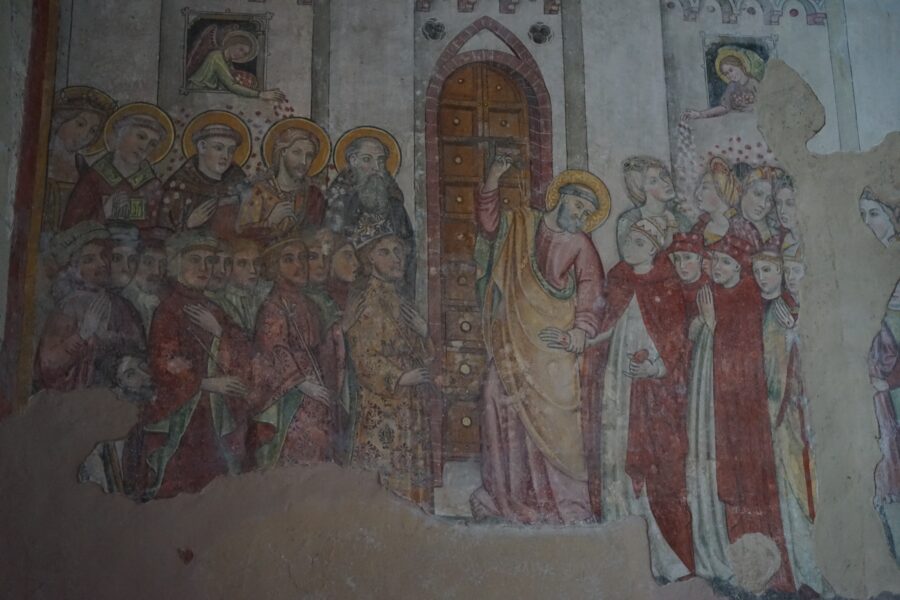
On the right of Christ the resurrection of the dead is depicted with the Tree of Life, while on the left is the Tree of Evil, a symbol of hell with its severed branches engulfed in flames. But there are many allegories related to the Gospels, the Divine Comedy and the medieval world of arts and crafts in a cross-section of the life and history of the time.
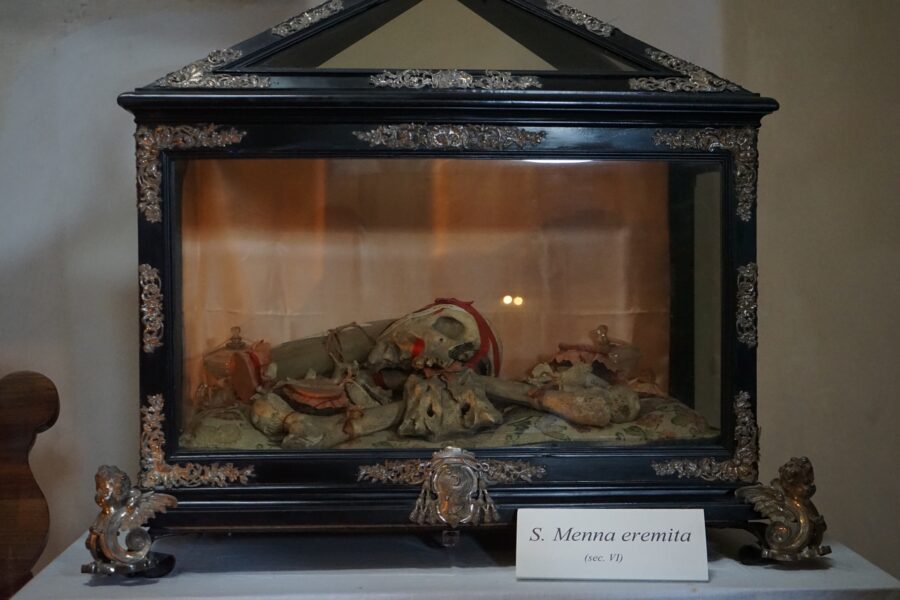
In the church there are also the very beautiful polyptych of the Annunciation by Angelillo Arcuccio and the relics of San Menna to which a temple is dedicated, an exceptional Romanesque monument from the early 1100s, with a unique mosaic floor.
Do not forget that Sant’Agata dei Goti is the land of Falanghina wine, which then spread throughout the Campania region and can now be counted among the most popular white wines in Italy.

Another flagship of the area is the annurca apple, with an intense aroma and a very particular taste. Could we not have bought some? To do this, we moved to the Maddaloni plain where the Carolino Aqueduct stands out, a daring engineering masterpiece protected by UNESCO as a World Heritage Site. Built by Luigi Vanvitelli to bring water from the sources of the Fizzo, located at the foot of the Taburno, to the Royal Palace of Caserta, it was at the time the longest bridge in Europe.
The part of the Carolino conduit that constitutes the Bridges of the Valley is counted among the most important works of art in the world and constitutes the most spectacular element of the entire engineering work.
In addition to art and history, the Sannio also offers ideal destinations to discover a handicraft of great value such as the splendid majolica of San Lorenzello which we talk about in a dedicated post and an intact and exuberant nature in an area characterized by rugged Apennine massifs, hills dotted with vines and olive trees and green valleys.
There are several possibilities for trekking within the Taburno-Camposauro Regional Park, formed by the two mountains which together with the Pentime create a profile reminiscent of that of a reclining woman called “La Dormiente del Sannio” (The Sannio’s Sleeper Woman).

The area includes splendid valleys: the Caudina which in its name recalls the Caudine Forks where the Romans suffered in 321 BC. the humiliating defeat by the Samnites, Telesina, Vitulanense and the Isclero valley with forests of oaks, chestnuts, beeches and hollies as tall as trees, where Otto enjoyed running and jumping, on the path faced with Nicola Matarazzo, professor of retired physical education that is dedicated to discovering his territory on foot and on horseback.
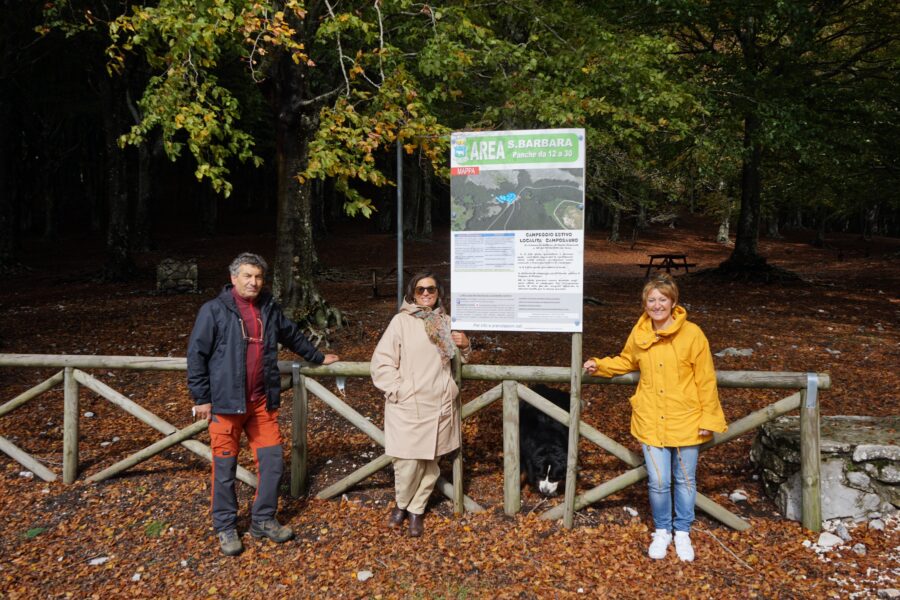
There are also many caves where hermits found refuge, such as that of San Menna which is located in the Vitulano district. Very beautiful is Camposauro plateau, of volcanic origin, where horses graze in the wild.

While the remains of the great Benedictine abbey of Santa Maria in Gruttis stand out between the Cappello and Stefano mountains. Did the walk make you hungry? The taste of local cuisine is unique, which reveals the passionate link with tradition in typical dishes such as the padellaccia with pork sausage, peppers and potatoes, and the ciambotta with potato, zucchini and chard.



